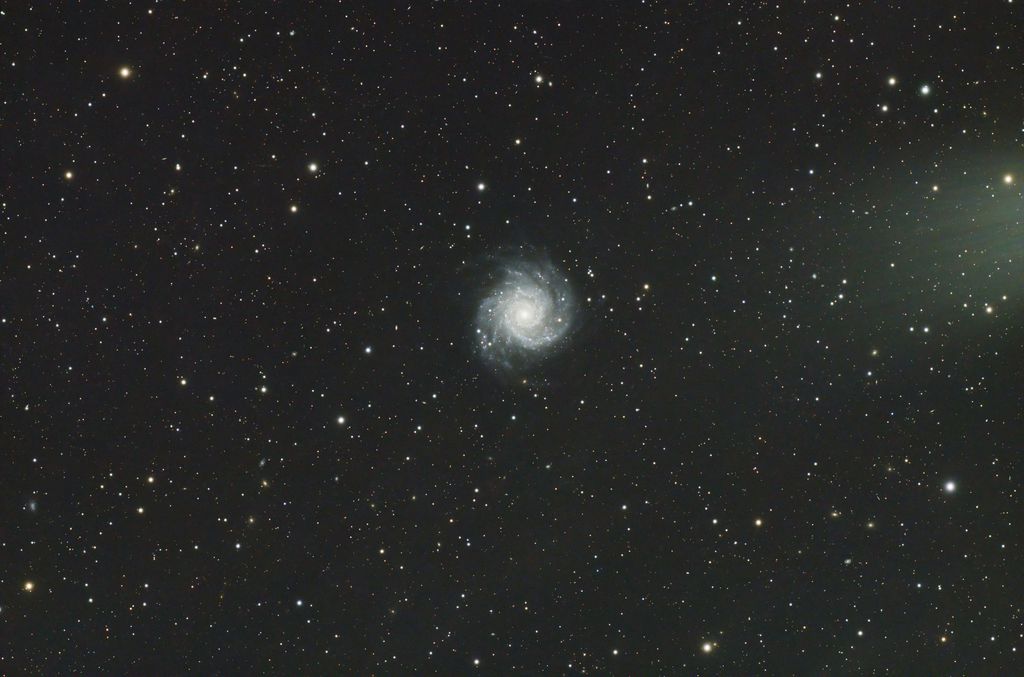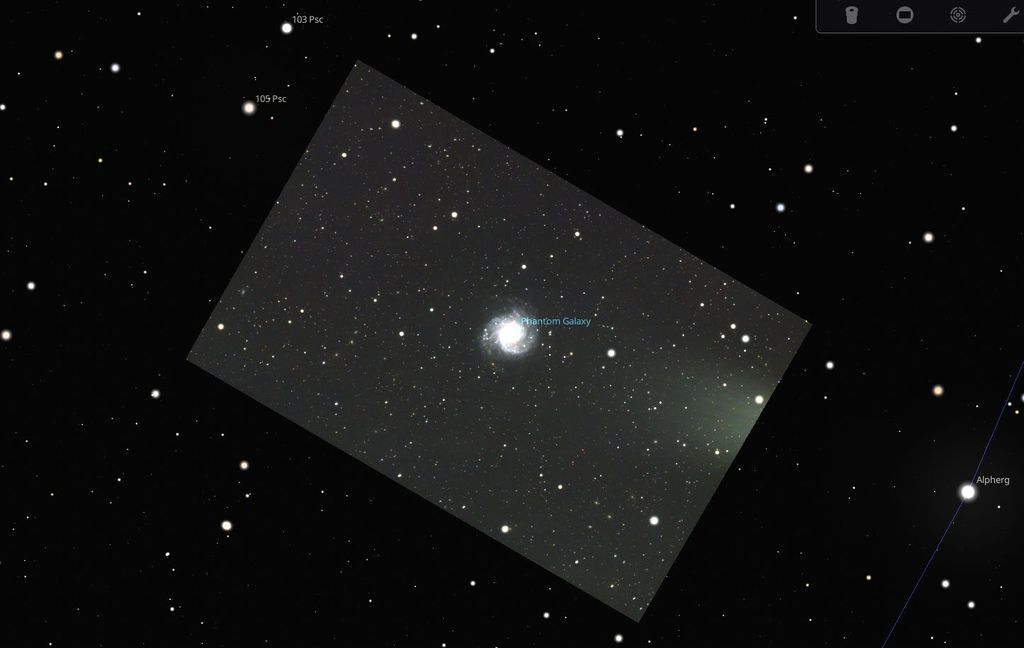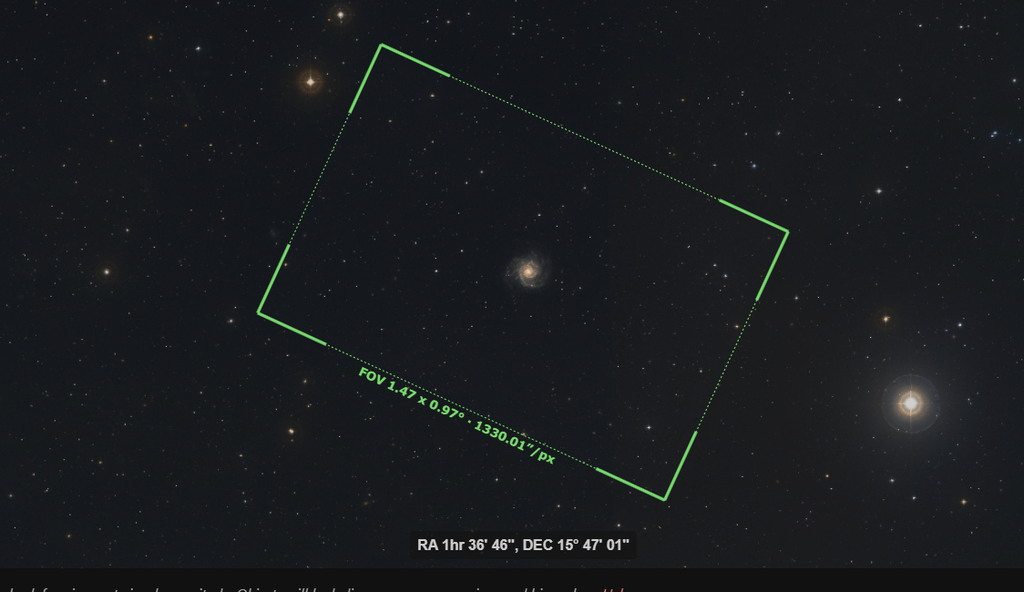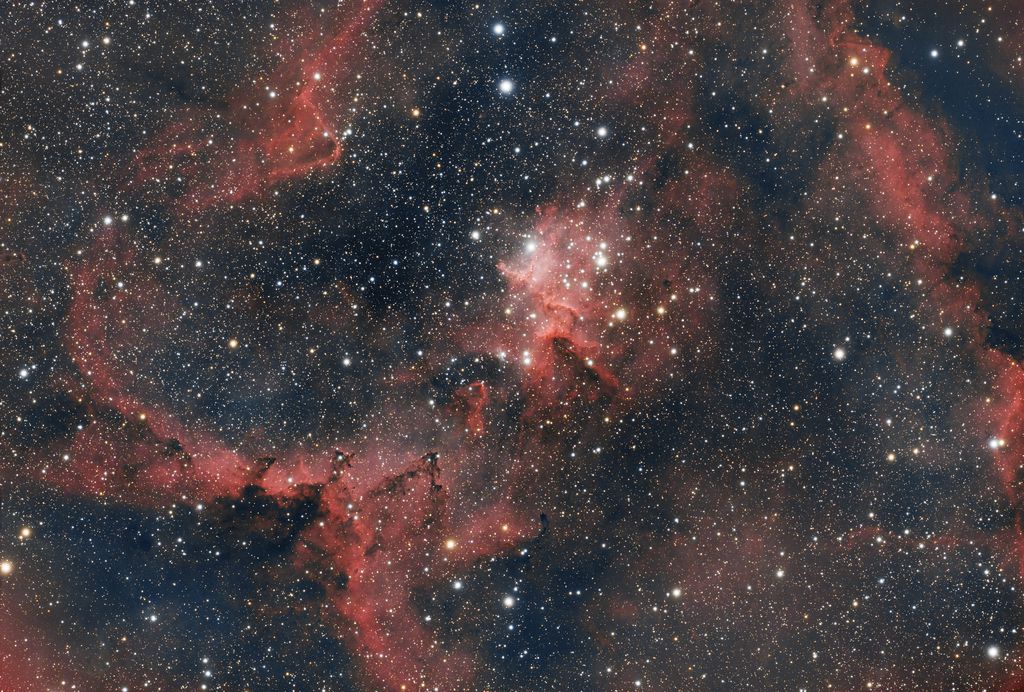I shot M74 last night and having processed the frames, have something that looks like amp glow. I know it can't be; my camera is an ASI2600MC Pro, but I can't work out what it is. It was taken through a Vixen SD115, so I can't imagine there were any light leaks and even if there were, wouldn't the brightness spread around as the scope tracked? I've checked the individual frames using Blink in Pixinsight and no visible issues there. Maybe there was a supernova just out of frame and I missed it? How exciting!  |
You cannot like this item. Reason: "ANONYMOUS".
You cannot remove your like from this item.
Editing a post is only allowed within 24 hours after creating it.
You cannot Like this post because the topic is closed.
Copy the URL below to share a direct link to this post.
This post cannot be edited using the classic forums editor.
To edit this post, please enable the "New forums experience" in your settings.
reflection from a nearby bright star.
|
You cannot like this item. Reason: "ANONYMOUS".
You cannot remove your like from this item.
Editing a post is only allowed within 24 hours after creating it.
You cannot Like this post because the topic is closed.
Copy the URL below to share a direct link to this post.
This post cannot be edited using the classic forums editor.
To edit this post, please enable the "New forums experience" in your settings.
I agree it’s probably a star. Had the same issue when I shot M109 and it was challenging to process out. I ended up swapping pixels from another part of the background.
Cheers,
Scott
|
You cannot like this item. Reason: "ANONYMOUS".
You cannot remove your like from this item.
Editing a post is only allowed within 24 hours after creating it.
You cannot Like this post because the topic is closed.
Copy the URL below to share a direct link to this post.
This post cannot be edited using the classic forums editor.
To edit this post, please enable the "New forums experience" in your settings.
Maybe the star η Psc (Alpherg)? It has a magnitude of 3.8. Isn't it too far from your FOV to cause such a damage?  |
You cannot like this item. Reason: "ANONYMOUS".
You cannot remove your like from this item.
Editing a post is only allowed within 24 hours after creating it.
You cannot Like this post because the topic is closed.
Copy the URL below to share a direct link to this post.
This post cannot be edited using the classic forums editor.
To edit this post, please enable the "New forums experience" in your settings.
Thanks all - I was just checking Telescopius and yes, that's the nearest star, but at magnitude 3.8 I'm surprised it has that much impact!  |
You cannot like this item. Reason: "ANONYMOUS".
You cannot remove your like from this item.
Editing a post is only allowed within 24 hours after creating it.
You cannot Like this post because the topic is closed.
Copy the URL below to share a direct link to this post.
This post cannot be edited using the classic forums editor.
To edit this post, please enable the "New forums experience" in your settings.
As previously stated, it's an out of frame star.
It's likely caused by using 36mm filters on your APS-C camera. It's a known thing. Basically that star hit the edge of your filters/masks and is bouncing directly at your sensor. The solution is either getting better filter masks, or painting the ones you have with a blacker paint.
As a band-aid, you can reframe your subject so the star does not hit that very edge, but this issue will plague you until you fix it.
|
You cannot like this item. Reason: "ANONYMOUS".
You cannot remove your like from this item.
Editing a post is only allowed within 24 hours after creating it.
You cannot Like this post because the topic is closed.
Copy the URL below to share a direct link to this post.
This post cannot be edited using the classic forums editor.
To edit this post, please enable the "New forums experience" in your settings.
maybe some external light check around you telescope site
one image side ( left or right side of sensor ) , mmm , for me come for outside
CS,BRIAN
|
You cannot like this item. Reason: "ANONYMOUS".
You cannot remove your like from this item.
Editing a post is only allowed within 24 hours after creating it.
You cannot Like this post because the topic is closed.
Copy the URL below to share a direct link to this post.
This post cannot be edited using the classic forums editor.
To edit this post, please enable the "New forums experience" in your settings.
Brian Puhl:
t's likely caused by using 36mm filters on your APS-C camera. It's a known thing. Basically that star hit the edge of your filters/masks and is bouncing directly at your sensor. Thanks - that makes sense other than I wasn't using any filters; just the normal spacing rings I've used on scores of occasions. I shall investigate further. Brian Diaz:
maybe some external light check around you telescope site There is a street light directly behind, but it's not shining directly into the garden and it's never interfered before; it's my usual shooting place. All other lights were turned off. Wouldn't that show a broader area of pollution too, rather than from what looks like a specific point? I bet the James Webb doesn't have these problems.
|
You cannot like this item. Reason: "ANONYMOUS".
You cannot remove your like from this item.
Editing a post is only allowed within 24 hours after creating it.
You cannot Like this post because the topic is closed.
Copy the URL below to share a direct link to this post.
This post cannot be edited using the classic forums editor.
To edit this post, please enable the "New forums experience" in your settings.
Piers Palmer:
Brian Puhl:
t's likely caused by using 36mm filters on your APS-C camera. It's a known thing. Basically that star hit the edge of your filters/masks and is bouncing directly at your sensor.
Thanks - that makes sense other than I wasn't using any filters; just the normal spacing rings I've used on scores of occasions. I shall investigate further. What do you mean you weren't using any filters? Not even a UV/iR??? I did misread a bit tho, not realizing this was OSC, but I think you understand, it's still going to be something very near the camera bouncing that stray light at the sensor. The easiest way I've found to locate these issues is to simply shine a light down the OTA tube from the objective end, the reflective areas will stand out with a glare.
|
You cannot like this item. Reason: "ANONYMOUS".
You cannot remove your like from this item.
Editing a post is only allowed within 24 hours after creating it.
You cannot Like this post because the topic is closed.
Copy the URL below to share a direct link to this post.
This post cannot be edited using the classic forums editor.
To edit this post, please enable the "New forums experience" in your settings.
Hi,
I think the bright star is Éta Piscium
|
You cannot like this item. Reason: "ANONYMOUS".
You cannot remove your like from this item.
Editing a post is only allowed within 24 hours after creating it.
You cannot Like this post because the topic is closed.
Copy the URL below to share a direct link to this post.
This post cannot be edited using the classic forums editor.
To edit this post, please enable the "New forums experience" in your settings.
Brian Puhl:
Not even a UV/iR??? Only the window that covers the sensor; is that a cut filter? Nothing else. I'll check as you suggest though!
|
You cannot like this item. Reason: "ANONYMOUS".
You cannot remove your like from this item.
Editing a post is only allowed within 24 hours after creating it.
You cannot Like this post because the topic is closed.
Copy the URL below to share a direct link to this post.
This post cannot be edited using the classic forums editor.
To edit this post, please enable the "New forums experience" in your settings.
l'AstroVan:
Hi,
I think the bright star is Éta Piscium I think it must have been that, but it's going to be clear tonight again so I might try again and reframe it to include that star. I'll keep everything else the same.
|
You cannot like this item. Reason: "ANONYMOUS".
You cannot remove your like from this item.
Editing a post is only allowed within 24 hours after creating it.
You cannot Like this post because the topic is closed.
Copy the URL below to share a direct link to this post.
This post cannot be edited using the classic forums editor.
To edit this post, please enable the "New forums experience" in your settings.
I shot from exactly the same location last night - everything was the same, other than the target, but it was in the same rough direction.  No similar artefact in this one, so I guess it must have been the nearby star!
|
You cannot like this item. Reason: "ANONYMOUS".
You cannot remove your like from this item.
Editing a post is only allowed within 24 hours after creating it.
You cannot Like this post because the topic is closed.
Copy the URL below to share a direct link to this post.
This post cannot be edited using the classic forums editor.
To edit this post, please enable the "New forums experience" in your settings.
I had this with moon-light, but it could also any lamp nearby.
|
You cannot like this item. Reason: "ANONYMOUS".
You cannot remove your like from this item.
Editing a post is only allowed within 24 hours after creating it.
You cannot Like this post because the topic is closed.
Copy the URL below to share a direct link to this post.
This post cannot be edited using the classic forums editor.
To edit this post, please enable the "New forums experience" in your settings.






